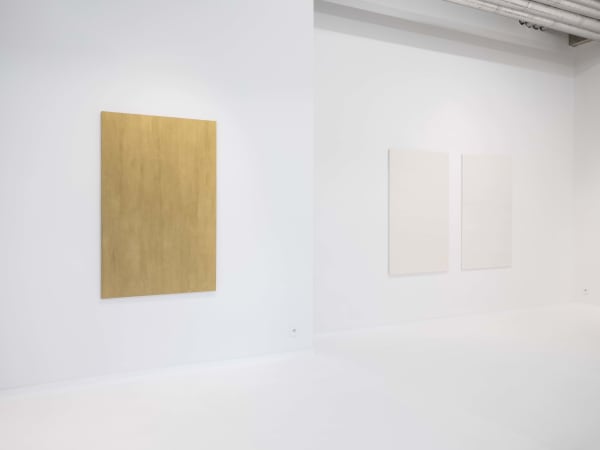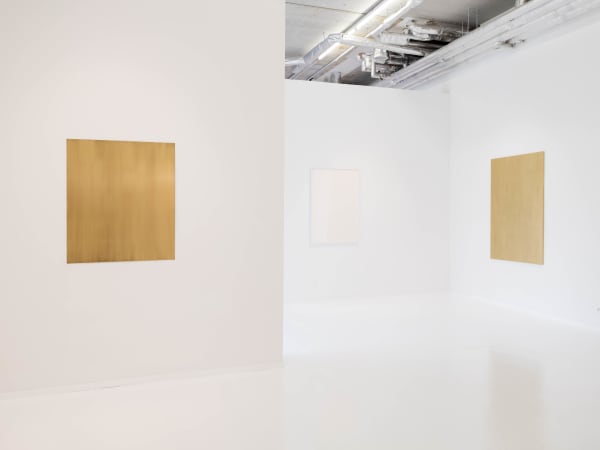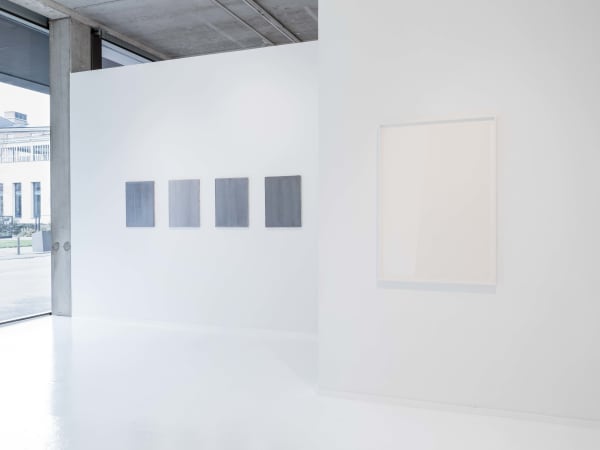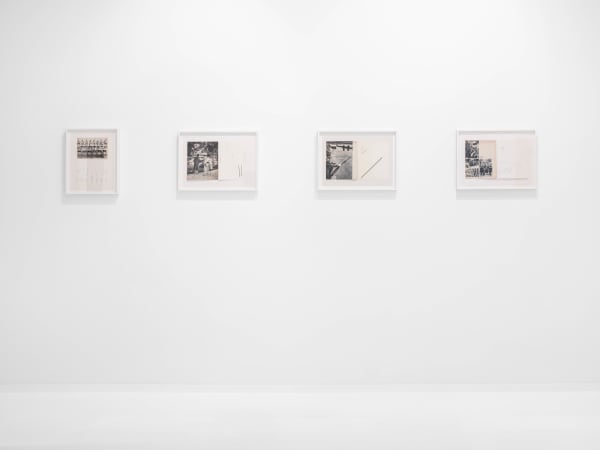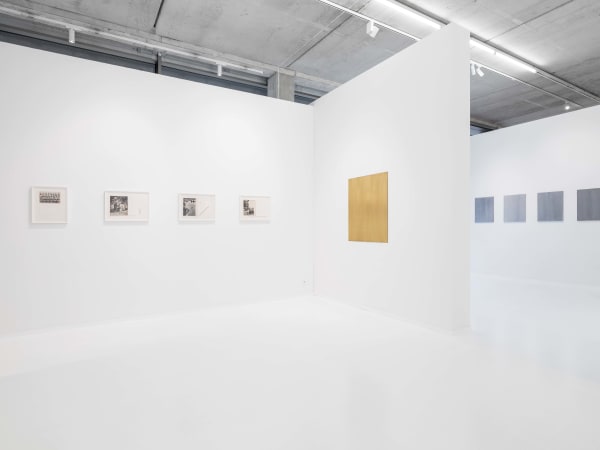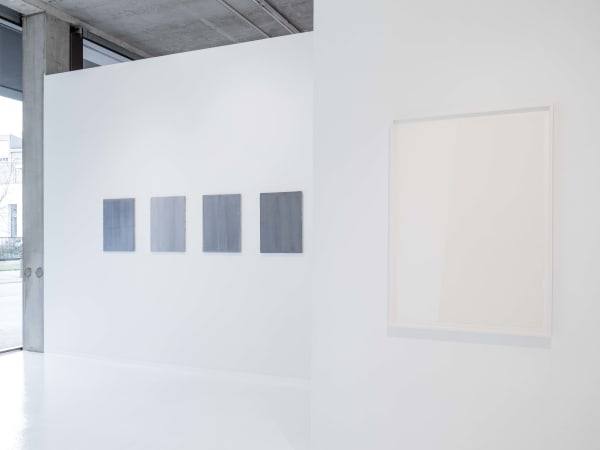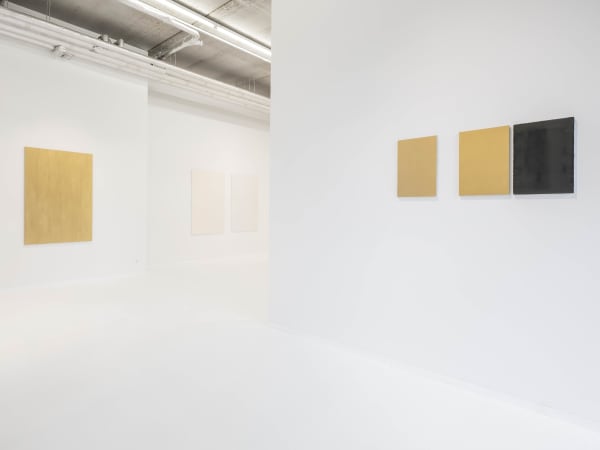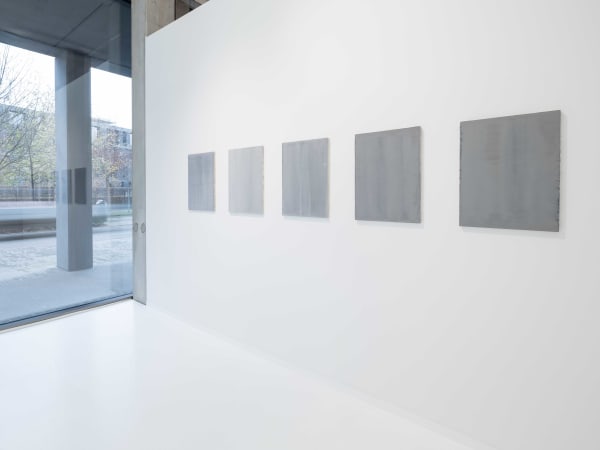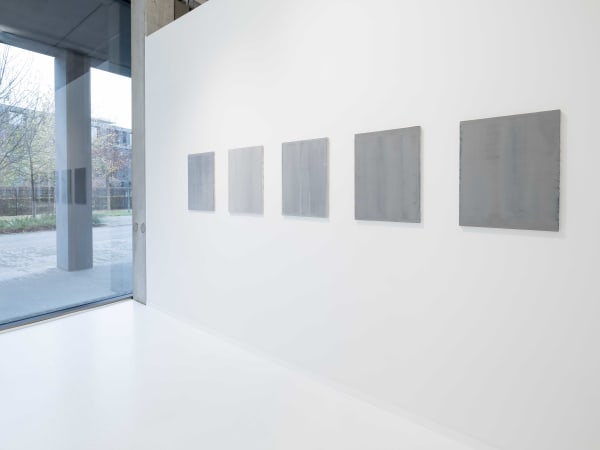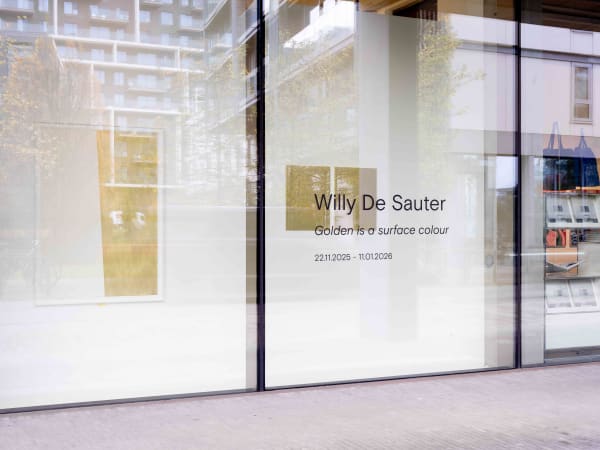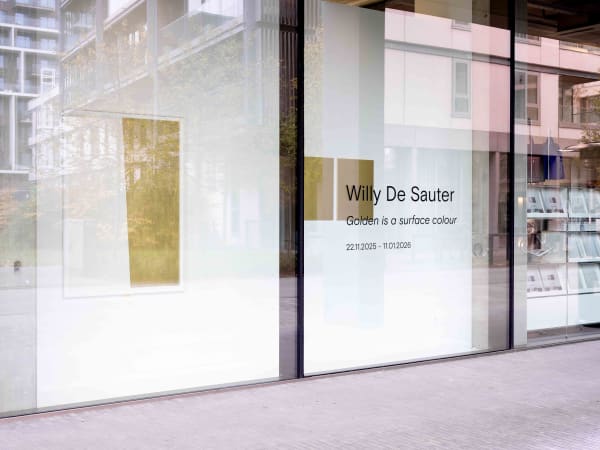Willy De Sauter: Golden is a surface colour (Ludwig Wittgenstein)
Essentials: factual material and artistic labour
Artists with a career that produces an oeuvre are rare. By oeuvre, we mean embracing the alert concentration to find the strength and inspiration from the creative process itself to tell a long-running and compelling story that is comparable, in a condensed way, to a mapped-out walk.
In a concise presentation, Willy De Sauter spans half a century of artistic “production” – with work dating from 1971 – when conceptual art, with a view to the cerebral Documenta 5 in Kassel by director Harald Szeemann, gradually made way for new narratives and a retour à l'ordre by re-establishing the museum as an institution as a benchmark and refuge for artists.
Like his contemporaries, Willy De Sauter's work reflected the unstable spirit of the times, with values becoming increasingly fragile and tradition and academicism being undermined by the expansion of individual freedom in a rapidly “emancipating” (Western) world.
For Willy De Sauter, preserving artistic freedom has literally proved to be worth its weight in gold; his career is a slow exploration of the basics in the (international) art surrounding him – as a sober analyst, he knew how to master the upheavals in art – art that was often “fundamental”, sober and detached from the delusions of the day.
Slow working implies time that, fuelled by reflection (as it were), converts into meditation. His oeuvre is like a mountain stream that, here and there, winding and babbling over rocks and other natural obstacles, finds its way towards a clear lake of absolute and majestic beauty. A goal that, by definition, can never be achieved; in this way, the artist remains busy and the art continues.
Artistic know-how as a "comment faire" is of paramount importance in his work, or should we rather speak of “production” – of how Willy De Sauter, for example, assembles his panels himself to keep the works completely straight and taut.
The exhibition begins with a number of early works (1971) that combine offset photographs with jet-black lines of ink on tracing paper. The images are taken from a very important book from 1964, “World Exhibition of Photography”, which consists of 555 photographs by 264 photographers from 30 countries “on the theme of what is man”. Compiler Karl Pawek and author Heinrich Böll were responsible for the book and the controversial “anthropological” exhibition that was shown in many museums in Europe. 1964 was the year of the World's Fair in New York, the year the legendary Mustang car was launched, and the year American artist Robert Rauschenberg triumphed at the Venice Biennale.
The choice of images from this book testifies to the artist's worldliness, who applied an abstract image analysis to a number of photographs. The result is a rhythmic dialogue with the narrative photographs, which sometimes make you smile at how culture changes with the spirit of the times. 'Japanese invalids begging in front of a temple in Kyoto', for example, generates a play of lines that strips the borrowed photographic image down to a subtle geo-abstract composition. The play of lines is almost a primary stylistic exercise in perception. These works remind me with pleasure of Paolo Uccello's powerful painting ‘La Bataille de San Romano’ (1456) – preserved in the Louvre in Paris – with a constellation of spears of heroic warriors, as a remarkable graphic presence in the monumental composition.
A collection of works from around 1981 shows how Willy De Sauter relates to and contrasts with earlier, more sculpturally essential and “self-limiting” work in texture and neutral colours such as white and grey. As a counterpoint, he discovered the power of gold in its lasting colour fastness and capricious interaction with texture and “visibility” that can never be fully predicted<span class="NormalTextRun SCX

